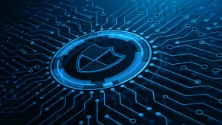IoT Boosting Semiconductor Manufacturers
After years of promise, the Internet of Things is finally helping manufacturers shift more chips
With signs of softness in the smartphone market, chipmakers have been relying on a boost from another area of considerable focus in recent years: the Internet of Things.
We've been hearing for years that the Internet of Things is the Next Big Thing, and we've been conditioned to take bold predictions about trillions of devices and tens of billions of dollars in IC revenue with a grain — or more — of salt.
So far, a number of chipmakers have reported softening demand for chips in smartphones, notably TSMC in its quarterly report last month. Still, fears about the smartphone market — and Apple's iPhone in particular — didn't stop Apple from reporting solid results for the first calendar quarter of this year, including sales of iPhone X that were better than had been feared.
While the smartphone story may or may not catch up with chip vendors as the year drags on, one thing that is abundantly clear from the first quarter results that have been announced so far is that the lift of IoT on semiconductor sales is accelerating. A number of firms have given credit to IoT for increasing sales, including Intel, Texas Instruments, STMicroelectronics, Cypress Semiconductor and Silicon Labs, to name just a few.
"Over the last several years, these companies have reorganized to assign entire divisions to IoT platforms," said Tom Hackenberg, a principal analyst for embedded processors at IHS Markit. "That's the reason you are hearing so much more about IoT driving earnings."
IC Insights projects that total semiconductor sales for IoT system functions will be worth about $24.5 billion this year, up from about $21.3 billion last year. The market research firm is currently in the process of updating its forecast for IoT chip sales, but last year's estimates have the market growing to $31.1 billion by 2020.
"Weakness in smartphone growth has definitely caused IC leaders in handsets to step up their efforts to serve Internet of Things," said Rob Lineback, senior market research analyst at IC Insights, in an email exchange with EE Times.
One challenge to defining the market opportunity for chipmakers in IoT is IoT itself. It's not a market, as much as a capability. As Hassane El-Khoury, president and CEO of Cypress, put it, when Cypress sells connectivity chips to carmakers s for connected cars, those devices are still sold into the automotive market, not a separate market altogether.
"Everyone has been defining IoT and throwing numbers out there to make their exposure look very big and cool," El-Khoury told EE Times. "I look at IoT as a capability, not a market all by itself."
Largely for this reason, El-Khoury said its tough to pin down exactly what the impact of IoT is on Cypress's business. IoT is one of three areas of focus — along with automotive and industrial — in El-Khoury's "Cypress 3.0" strategy for the company unveiled when he took over last year. As the example El-Khoury used above illustrates, there is plenty of overlap in these areas. Still, suffice it to say, Cypress sells microcontrollers and memory for that are going into a lot of IoT-related products.
"We are a monster player in IoT across the board," El-Khoury said.
One measure of IoT's impact within Cypress is the company's connectivity business, which grew 47 percent year-over-year in the first quarter, El-Khoury said.
Silicon Labs, meanwhile, already derives nearly 50 percent of its sales from the company's IoT business, which posted 17 percent year-over-year growth in the first quarter.
Tyson Tuttle, Silicon Labs' president and CEO, told EE Times that that percentage is only going to grow over time. Tuttle expects the company's IoT business to be worth around $500 million this year, a number that is "just scratching the surface," he said.
Ultimately, though, Tuttle believes the promise of the IoT won't be realized until the market moves from a fragmented mess of proprietary protocols, technologies and products to a more cohesive model where devices communicate with one and another and up to the cloud more seamlessly. That's the primary reason that Silicon Labs has beefed up its offerings with a number of recent acquisitions, including the $240 million acquisition of Z-Wave, which closed last month.
"There are things that need to come together for the markets to really take off," Tuttle said. "In the end, we need to start to design things with the end user in mind."
"We are just at the start of this whole thing," El-Khoury said. "As more and more technology gets introduced, more and more things can get connected."
在线留言询价

5G IoT Satellites Countdown for Takeoff

IoT Merging Into Data-Driven Design
- 一周热料
- 紧缺物料秒杀
| 型号 | 品牌 | 询价 |
|---|---|---|
| TL431ACLPR | Texas Instruments | |
| MC33074DR2G | onsemi | |
| CDZVT2R20B | ROHM Semiconductor | |
| BD71847AMWV-E2 | ROHM Semiconductor | |
| RB751G-40T2R | ROHM Semiconductor |
| 型号 | 品牌 | 抢购 |
|---|---|---|
| BU33JA2MNVX-CTL | ROHM Semiconductor | |
| BP3621 | ROHM Semiconductor | |
| ESR03EZPJ151 | ROHM Semiconductor | |
| STM32F429IGT6 | STMicroelectronics | |
| IPZ40N04S5L4R8ATMA1 | Infineon Technologies | |
| TPS63050YFFR | Texas Instruments |
- 周排行榜
- 月排行榜
AMEYA360公众号二维码
识别二维码,即可关注


请输入下方图片中的验证码:
























